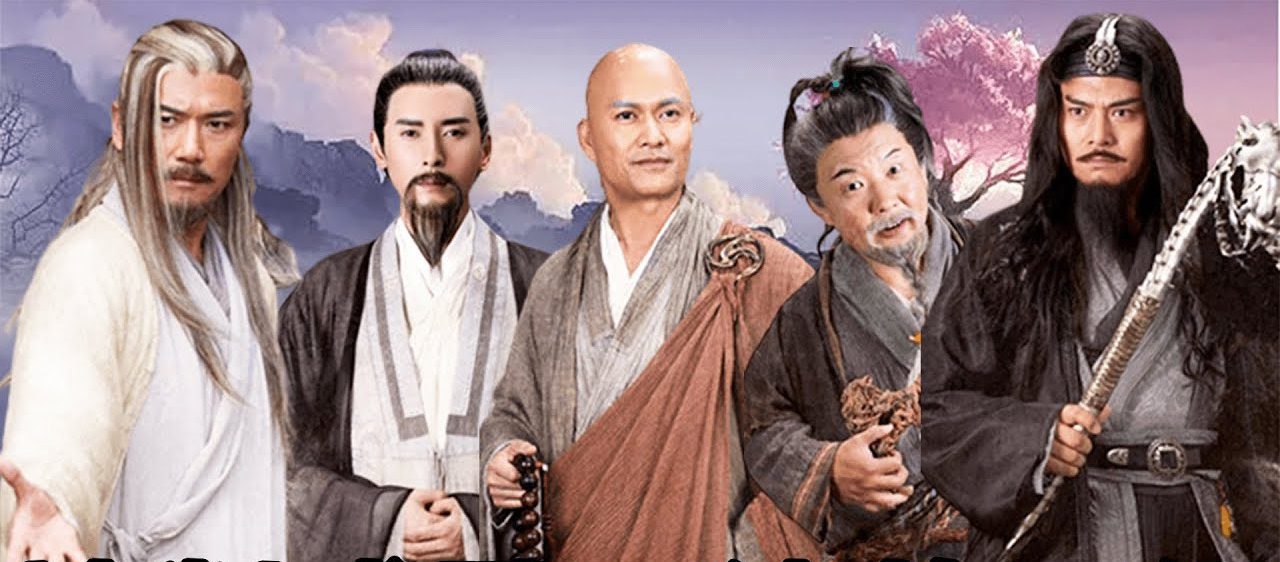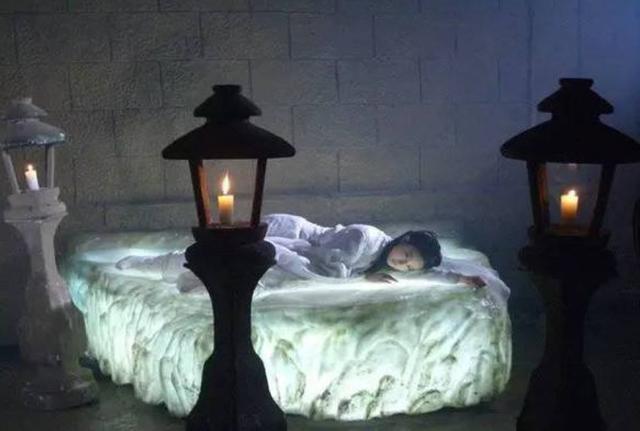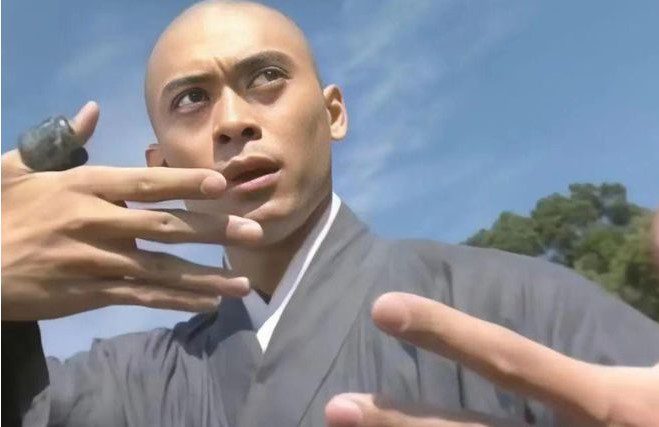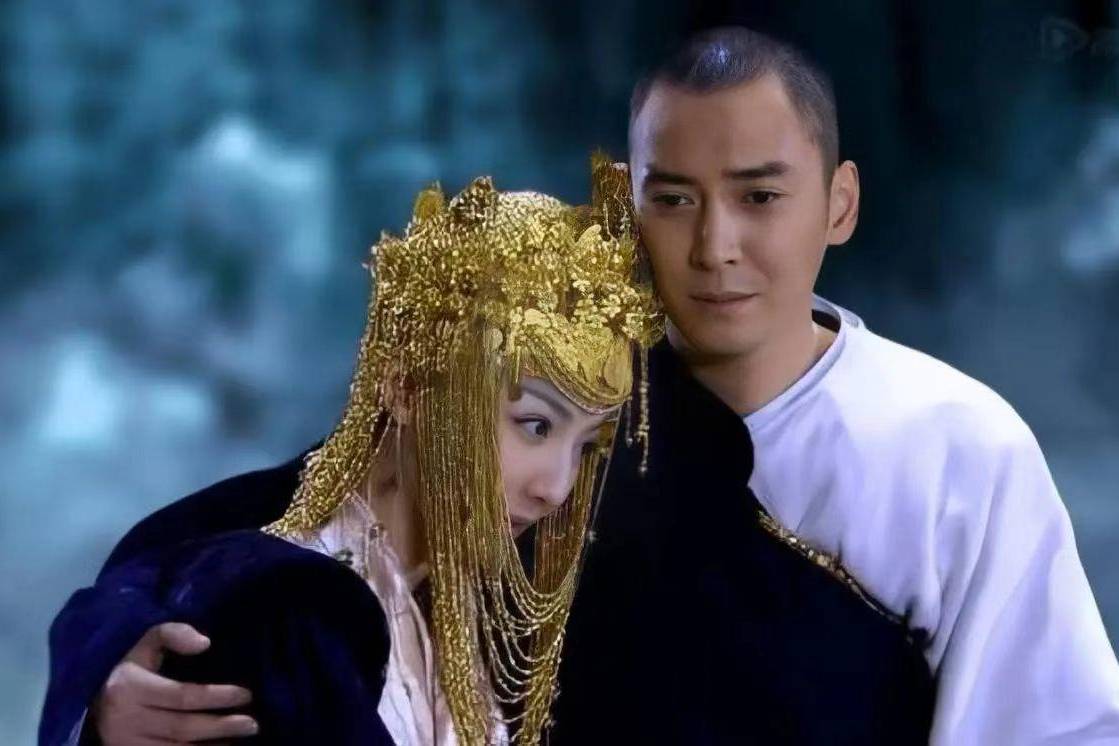This article will analyze the clues in the story to uncover the true identity of Wang Chongyang’s master.
The Power of the Five Absolute Masters
In the world of martial arts created by Jin Yong, the hidden masters all have complex enmities and relationships within the jianghu. This is the allure of Jin Yong’s stories. He depicts a martial arts world filled with extraordinary masters. For example, in “The Legend of the Condor Heroes” and “The Return of the Condor Heroes,” there is mention of a reclusive master, Wang Chongyang, known as the “Central Divine Communication.” The Four Absolutes—Dong Tà , Tây Äá»™c, Nam Äế, Bắc Cái—are already peak experts, yet Wang Chongyang’s martial arts surpass even theirs. Just how powerful is this individual?

The Five Absolutes were the five participants in the Hua Shan Sword Debate years ago. That battle shook the heavens and the earth. Zhu Ba Tông once reminisced: “Back in the late winter of that year, on the summit of Hua Shan, the snow blanketed the mountains. The five of them conversed while displaying their skills, showcasing their techniques amidst the heavy snowfall for seven days and nights. In the end, Dong Tà , Tây Äá»™c, Nam Äế, and Bắc Cái all had to bow to the martial arts of my senior brother, Wang Chongyang.”
In the following events, Nam Äế, Bắc Cái, Äông Tà , and Tây Äá»™c all appear. Except for Nam Äế, who has renounced the world and lives in seclusion, the other three masters seem to roam freely throughout the martial world.
Take Hoà ng Dược SÆ° as an example; he alone can contend with the entire Seven Heroes of Quán Chân and Kha Trấn Ãc. Meanwhile, the Jiangnan Seven Freaks can only match one of the Seven Heroes of Quán Chân, Qiu Xu Ji. This illustrates how the title “Five Absolutes” signifies an exceptionally high status in the martial world.

Even Hoà ng Dược SÆ°, who is so proud, can only admire Wang Chongyang when mentioned. He once said: “Since the passing of Wang Chongyang, there is no one in this world worthy of the title of the greatest martial artist anymore.” Hoà ng Dược SÆ° is such a proud individual; if Wang Chongyang were only slightly better than him, he might not have admired him as much. Therefore, it is evident that Wang Chongyang’s strength far exceeds that of the other four. Given a master of such caliber, his master must surely be an extraordinary figure as well.
The Mystery of the Ice-Heart Bed’s Origin
To discover who Wang Chongyang’s master is, we must first understand the Ice-Heart Bed. The origin of this bed is linked to the founder of the Ancient Tomb sect, Lam Triá»u Anh. She is also a peak master but, like Wang Chongyang, has never formally appeared.
In “The Return of the Condor Heroes,” there is mention of an event that occurred during the time of “The Legend of the Condor Heroes,” where Lam Triá»u Anh was severely injured by another. With her level of martial arts, who could have inflicted such a serious injury on her? However, what is even more thought-provoking is that Wang Chongyang traveled to the extreme cold region to find ice-emerald. He stated: “I heard that in the extremely cold northern lands, there is a type of stone called ice-emerald, which can cure serious illnesses, and I must go find it for my sister.”

This is the origin of the Ice-Heart Bed. Lam Triá»u Anh could only survive by lying on the Ice-Heart Bed. But where is the extreme cold region that he mentioned? It is likely not the North Pole, as for ancient people, going to the North Pole would be tantamount to going to their death. Not only the North Pole, but even Siberia or today’s Northeast would also be unbearable for them. Therefore, the extreme cold region that Wang Chongyang mentioned could very well be the location of the ancient Western Xia.
However, how did Wang Chongyang know that there were ice-emerald stones in the place he visited, and how could this type of stone heal injuries? Clearly, these details must have come from someone telling Wang Chongyang about them, or this is knowledge he acquired from his master. Sohu proposes a hypothesis: it is highly likely that his master was the leader of Ling Shou Palace back then, who is also Xu Zhu, the prince consort of Western Xia.
A Master from Western Xia
Why say that Xu Zhu is Wang Chongyang’s master? “Demi-Gods and Semi-Devils” and “The Legend of the Condor Heroes” may not necessarily be related. However, the old manuscripts may not have connections, but the updated versions are. For example, in the final chapter of the new version of “Demi-Gods and Semi-Devils,” there is a passage that mentions: “Many years later, a young hero appeared in the Beggar’s Sect, calm and skilled, beloved by everyone. All members of the Beggar’s Sect agreed to recommend him as the sect leader. Everyone respected the original wishes of Xiao Feng, bringing this person to Ling Shou Palace for Xu Zhu to evaluate and recognize first, and then passing on the Dog-Beating Stick Technique and the Eighteen Dragon-Subduing Palms to him. This young sect leader did not disappoint expectations, mastering the divine skills and further strengthening the Beggar’s Sect.”
In “The Legend of the Condor Heroes,” Jin Yong also provided answers: “During the Northern Song Dynasty, the leader of the Beggar’s Sect, Xiao Feng, used this martial art to compete with the heroes of the world, and very few could withstand three moves from him. At that time, there was the Eighteen Dragon-Subduing Palms, which later Xiao Feng and his sworn brother Xu Zhu simplified, selecting the most essential techniques and powerful moves, changing it to the Eighteen Dragon-Subduing Palms. This palm technique was passed to Hong Qi Gong, who praised it during the sword debate on the summit of Hua Shan with Wang Chongyang, Hoà ng Dược SÆ°, and others.”

It can be seen that the worldview of the two works is indeed consistent. This also raises a new question: if the worldviews of “Demi-Gods and Semi-Devils” and “The Legend of the Condor Heroes” are consistent, why do we not see Xu Zhu or the successor of the Tiêu Dao sect, Ling Shou Palace, later on? Combining this with Wang Chongyang’s experiences will make everything clearer.
Xu Zhu has a special identity; he is not only the leader of the Tiêu Dao sect and the master of Ling Shou Palace but also the prince consort of Western Xia. Therefore, sooner or later, he would have to return to Western Xia with Mộng Cô. Western Xia and the Jin Dynasty had some conflicts, and Wang Chongyang, in his youth, participated in the uprising against the Jin army. Perhaps Xu Zhu was the one who took on the identity of the prince consort of Western Xia to accept Wang Chongyang as a disciple in his youth. It was also during this time that Wang Chongyang learned that in Western Xia, there was an ice cave containing extremely cold ice, which had healing properties.

The fact that Wang Chongyang could dominate the Four Absolutes in the past was also thanks to his master, Xu Zhu. This also explains why he later chose to become a Taoist priest rather than follow the Buddhist path. After all, the Tiêu Dao sect is a Daoist sect. Thus, all causes and effects can be clearly explained.
(Compiled)















